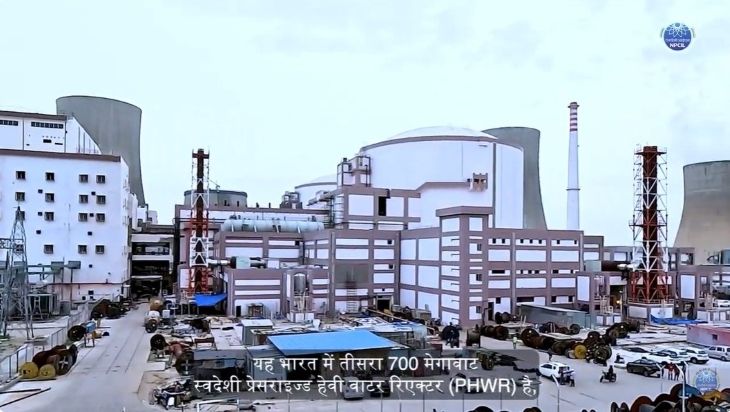
India has achieved another milestone in its nuclear energy programme with the successful grid connection of Unit 7 at the Rajasthan Atomic Power Project (RAPP-7), marking the third domestically developed 700 megawatt electric (MWe) pressurised heavy water reactor (PHWR) to join the national grid.
The unit, located at Rawatbhata in Rajasthan, attained its first criticality in September and was synchronized with the northern power grid earlier this week. According to a video statement released by the Nuclear Power Corporation of India Ltd (NPCIL), all regulatory inspections were passed, and the reactor was approved for grid connection by the Atomic Energy Regulatory Board (AERB).
Following grid synchronisation, RAPP-7 will undergo power ascension testing—a phased process during which the reactor’s output is gradually increased under regulatory supervision until full operational capacity is reached. Upon successful completion, the unit will transition to commercial status.
RAPP-7 is part of India’s strategic expansion of its indigenous PHWR fleet. It follows Kakrapar Units 3 and 4, which are the first two reactors of this type. Kakrapar Unit 3 achieved first criticality in mid-2020, was connected to the grid in January 2021, and entered commercial operation by July 2023. Unit 4 reached criticality in late 2023, was grid-connected by February 2024, and began commercial operations in March.
“NPCIL has now firmly established its capability in constructing and managing this class of reactors,” the corporation noted in its announcement.
Adjacent to RAPP-7, construction is underway for a sister unit—RAPP-8—which will also have a 700 MWe capacity. The Rawatbhata site already hosts six operational PHWRs with a combined capacity of 1,180 MW.
Looking ahead, the Indian government has approved a series of 700 MWe PHWRs to be built in “fleet mode” at various sites across the country, including Kaiga (Karnataka), Gorakhpur (Haryana), Chutka (Madhya Pradesh), and Mahi Banswara (Rajasthan).
In a broader policy push, Finance Minister Nirmala Sitharaman earlier this year announced the goal of expanding nuclear power capacity to at least 100 GW by 2047. This vision includes deploying small modular reactors (SMRs) based on Indian designs, with initial units targeted for operation by 2033. To enable greater private sector involvement, legislative amendments are also being considered.
Source- WNN
Kindly check the Snubber Test benches for Nuclear Industry.
https://neometrixgroup.com/products/dynamic-snubber-shock-arrestor-test-facility

